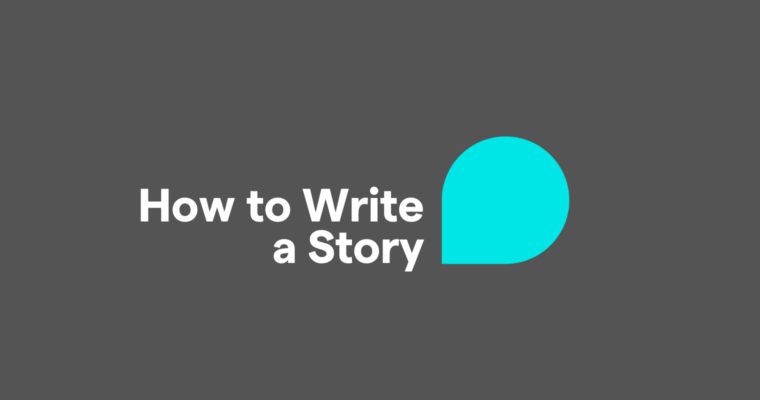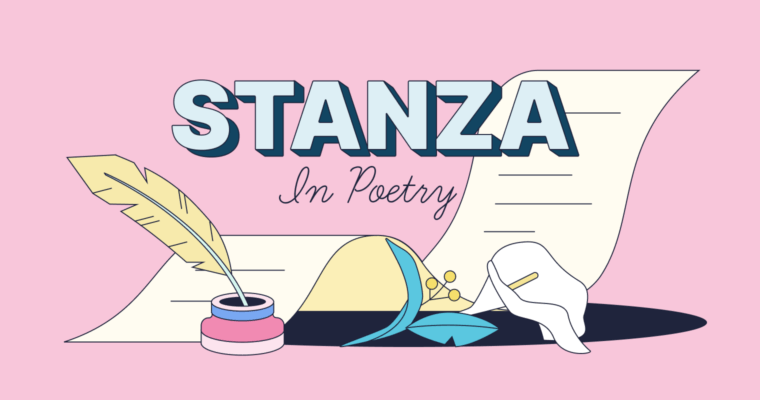
- Here are five steps for writing a story: Find inspiration, brainstorm ideas, outline the plot, write a first draft, and refine it through revision and editing.
- Every story typically includes five key components—setting, plot, conflict, characters, and theme.
- While stories can take countless forms, most follow one of seven classic plot types, such as rags to riches or overcoming the monster.
- Anecdotes are similar to stories but may not include all five fundamental elements.
- Narrative is another word for story, emphasizing how it is structured and told.
Storytelling is fundamental to human connection—it’s how we learn, bond, and unwind. Many dream of writing a story, but getting started can be challenging.
This guide breaks down the process into five essential steps, explores key story elements, and introduces common plot structures.
Table of contents
What is a story?
A story is a connected sequence of events, whether real or fictional, shared through books, movies, or everyday conversations.
Stories serve various purposes—they entertain through novels and films, inform through news, and teach valuable lessons through parables and fairy tales.
When writing a story to engage and captivate readers, its definition becomes more nuanced. Let’s explore the essential elements that make a story compelling.
Elements of a story
The beauty of storytelling lies in its limitless possibilities—but not everything makes for an engaging read. For centuries, writers have studied what makes a story compelling. Through this, five essential elements have emerged.
1 Setting
Setting is the time and place in which a story takes place, such as modern-day New York City or a spaceship in the future. It provides the context for the events and describes the “world” of the story.
2 Plot
The plot of a story is what the story is about, specifically the events that take place. Each event in the story is called a plot point, and the plot points all connect to tell a story from the beginning to the end.
3 Conflict
Conflict is the driving force of a story, creating drama and suspense that keep readers engaged. It introduces risks and consequences the characters must face. Usually, the conflict revolves around the main character’s goal, but a story can have multiple conflicts. Secondary conflicts, often explored through subplots, may even unfold without the protagonist.
4 Characters
Characters are the heart of a story, whether they’re people, animals, or even abstract concepts (like emotions in Inside Out). Most stories center on a main character, or protagonist, supported by friends, rivals, or other key figures. When the conflict involves a central adversary, that character is the antagonist.
5 Theme
A theme is the underlying idea or message woven throughout a story, adding depth and meaning. It can be a moral lesson, a philosophical concept, or a metaphor for real life. Themes range from simple, like the power of love in a romance, to complex, such as an allegory reflecting historical events and their consequences.
Different types of stories
Each story is unique in its combination of characters, setting, plot, conflict, and theme. However, most narratives fall into one of seven classic plot types, as identified by journalist and author Christopher Booker:
- Overcoming the monster: A hero must defeat a powerful enemy. (Star Wars)
- Rags to riches: A once-powerless protagonist gains and loses power but grows as a person. (Cinderella)
- The Quest: A hero, often with companions, embarks on a journey to achieve a goal. (The Lord of the Rings)
- Voyage and return: The protagonist travels to an unfamiliar world, learns important lessons, and returns home. (Alice in Wonderland)
- Rebirth: A character confronts their flaws and undergoes a transformation. (A Christmas Carol)
- Comedy: A lighthearted story with a happy ending, often driven by humor and misunderstandings. (Bridget Jones’s Diary)
- Tragedy: A serious story in which the protagonist’s flaw leads to their downfall. (Macbeth)
These plot types serve as broad templates, and stories within each plot type can be vastly different. For example, Groundhog Day and Pride and Prejudice may seem unrelated, yet both follow a rebirth arc, where a flawed character overcomes obstacles to grow.
Classifying stories this way helps to analyze, categorize, and better understand storytelling.
How long should a story be?
Although stories have no minimum or maximum length, they are often categorized by their lengths. These are the most commonly used designations:
- Novel: More than 40,000 words
- Novella: 17,500–40,000 words
- Short story: 7,500 words or fewer
You might also be familiar with terms like novelette and flash fiction. These are subcategories that refer to stories of specific lengths within these larger categories. A novelette is longer than a short story but shorter than a novella, while flash fiction is a story that is typically fewer than 1,500 words.
Is an anecdote the same as a story?
An anecdote is a brief account of events that lacks the complete structure of a story. It might describe a moment at work or a fun experience at an amusement park but doesn’t necessarily include all five key story elements.
While this anecdote has characters and a setting, it lacks a structured plot, conflict, or theme—key components that define a complete story.
What is a narrative?
A narrative is a structured account of connected events, real or fictional, that conveys a story through a particular perspective or style. Just as the word composition can refer to a specific piece of writing or the art of writing, the term narrative can refer to a story itself or how it is told.
A story’s narrative is the way its plot elements are presented. A narrative uses the point of view of the first or third person (and, in some cases, the second person).
You probably know the story of Goldilocks and the Three Bears. The version you’re familiar with is a narrative told in the third person. Now imagine reading the story told from Mama Bear’s perspective—the narrative might include a passage like the following:
“I followed the small, dirty footprints from the front door to the kitchen, where I found somebody had ransacked the pantry and left crumbs all over.
‘Mama, come quick! Somebody’s in your bed!’ Papa Bear called from the bedroom. My heart pounding, I told Baby Bear to stay in the kitchen. I didn’t know what to expect … was this intruder dangerous?”
See how the storyteller’s perspective shapes the narrative?
5 steps for writing a story
The story writing process is similar but not identical to the writing process you use for other kinds of writing. However, with a story, you must ensure the five elements we listed above are present. Here’s how to write a story in 5 steps:
1 Find inspiration
The first step in writing a story is coming up with an idea. If the story is an assignment, you might already have a theme, a conflict, and/or other elements to work with. If not, look for inspiration. You can find inspiration anywhere—your own experiences, news stories, historical events, even just letting your mind wander down a “what if?” rabbit hole.
Every story begins with an idea. Some elements—like theme or conflict—may already be provided if you’re writing for an assignment. Otherwise, inspiration can come from anywhere: personal experiences, news, history, or just letting your mind wander down a “what if?” rabbit hole.
Stay curious—watch, listen, observe, and take notes. The more you engage with the world, the more story ideas will naturally emerge.
2 Brainstorm
Once you have an idea for a story, brainstorm. Jot down all your ideas, including a rough outline of how the plot will progress. Let yourself play with ideas for characters, settings, plot points, and how the characters will resolve the main conflict (or not!).
With the basic points down, decide on the point of view you’ll use. This is where the idea of narrative comes into play—who is telling the story, and how does that character’s experience and perspective direct the narrative?
3 Create an outline
Next, draft an outline for your story. A story outline is similar to outlines used for other kinds of writing, like academic papers. Your outline is a basic framework for your story that lists its key plot points and relevant details. For many writers, a story’s outline helps map out the scenes that make up the story.
4 Write the first draft
Now, just write—let the story flow without overthinking or editing. Focus on getting your ideas down, knowing that refinement comes later. The first draft isn’t about perfection; it’s about bringing your story to life.
5 Revise and edit your story
At this stage, outside feedback is invaluable. A writing group, friends, or family can offer fresh perspectives, catching plot holes, weak passages, or mischaracterizations you might overlook.
Use their input to revise your story into a stronger second draft. While it may be close to finished, don’t skip proofreading—polishing grammar, spelling, and punctuation is essential. If possible, have readers review it again for final refinements.
Examples of stories
The Tortoise and the Hare, an allegory attributed to Greek storyteller Aesop, is one of many stories from the ancient world that have stood the test of time. Its theme is steady progress beats speed when one is pursuing a goal.
Another famous story is The Thousand and One Nights. This is a collection of stories within a larger story, similar to The Canterbury Tales and The Decameron. The main plot of The Thousand and One Nights is the story of Scheherazade, a young woman who marries the king, delaying her execution by telling him a new story every night. Eager to hear the story’s end, he delays the execution over and over, for a total of 1,001 evenings. This kind of story is called a frame story, as multiple shorter stories fit into a larger framework.
Frankenstein (its official title is Frankenstein, or, The Modern Prometheus) is a well-known story by Mary Shelley, published in 1818. The story, which has been republished and reimagined countless times since its initial release, explores themes of life and death and the conflict of humans vs. nature.
How to write a story FAQs
What are stories?
Stories are accounts of events that include a setting, theme, plot, conflict, and at least one character.
What are the five steps for writing a story?
Writing a story follows five key steps:
- Find inspiration
- Brainstorm ideas
- Outline the plot
- Write the first draft
- Revise and edit
How does a story work?
A story communicates a theme by telling the reader about a series of events, also known as a narrative. Within the narrative, a character faces at least one conflict, which often (but not always) changes the character.
What are the different types of stories?
There are many different kinds of stories. The seven basic plot types are:
- Overcoming the monster
- Rags to riches
- The quest
- Voyage and return
- Rebirth
- Comedy
- Tragedy
What makes a story good?
Everyone has their own preferences for what they like in a story, but certain traits are more popular than others. Good stories usually have relatable characters, a dramatic conflict, unexpected twists, and a satisfying conclusion.






